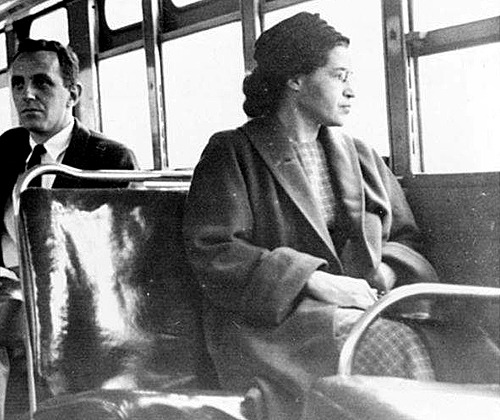






November 20, 1969: The Occupation of Alcatraz begins.
On this day in 1969, seventy-nine Native Americans, mostly student protesters, set out in a boat to occupy the San Francisco Bay’s famous island prison at Alcatraz (“the Rock”). In this highly-publicized event, occupiers protested the American government’s policy in dealing with Native Americans, particularly its numerous broken treaties with Native American tribes and its Indian termination policy. The protest was fairly effective in achieving recognition for the latter issue; in 1970, President Nixon delivered to Congress a message in which he criticized termination and instead recommended self-determination, and throughout the 70s, the federal government passed legislation that promoted the sovereignty of Native American tribes. During this period, President Nixon also more than doubled the budget of the Bureau of Indian Affairs.
The principal organizer of the occupation was Adam Fortunate Eagle, a half-Chippewa activist; the spokesperson for the Indians of All Tribes organization was part-Sioux, part-Mexican activist John Trudell; another leader was Richard Oakes, a Mohawk Indian who lived with his family on Alcatraz until 1970 and sent this message to the San Francisco Department of the Interior:
We invite the United States to acknowledge the justice of our claim. The choice now lies with the leaders of the American government - to use violence upon us as before to remove us from our Great Spirit’s land, or to institute a real change in its dealing with the American Indian…We and all other oppressed peoples would welcome spectacle of proof before the world of your title by genocide. Nevertheless, we seek peace.
When the Ohlone and other indigenous peoples inhabited the San Francisco Bay Area, Alcatraz was regarded with suspicion, and it was even used as a place of exile and ostracism. It was abandoned as a federal penitentiary in 1963, and it was subsequently claimed by the 1969 protesters by “right of discovery”, the doctrine used to justify the acquisition of native-held lands by colonial powers (especially in the 19th century). The occupation lasted until 1971, and, for nineteen months, students, married couples, and even children lived on the island, garnering support from even celebrities like Jane Fonda and Marlon Brando. The last protesters left in June of 1971, after electrical power and telephone lines were cut off by the government. The occupation’s stated goal of creating a spiritual and cultural center on the island was never fulfilled, and most of the activists’ demands were never met, but it was influential overall, especially given its direct effect on federal policy toward Native Americans.






















































